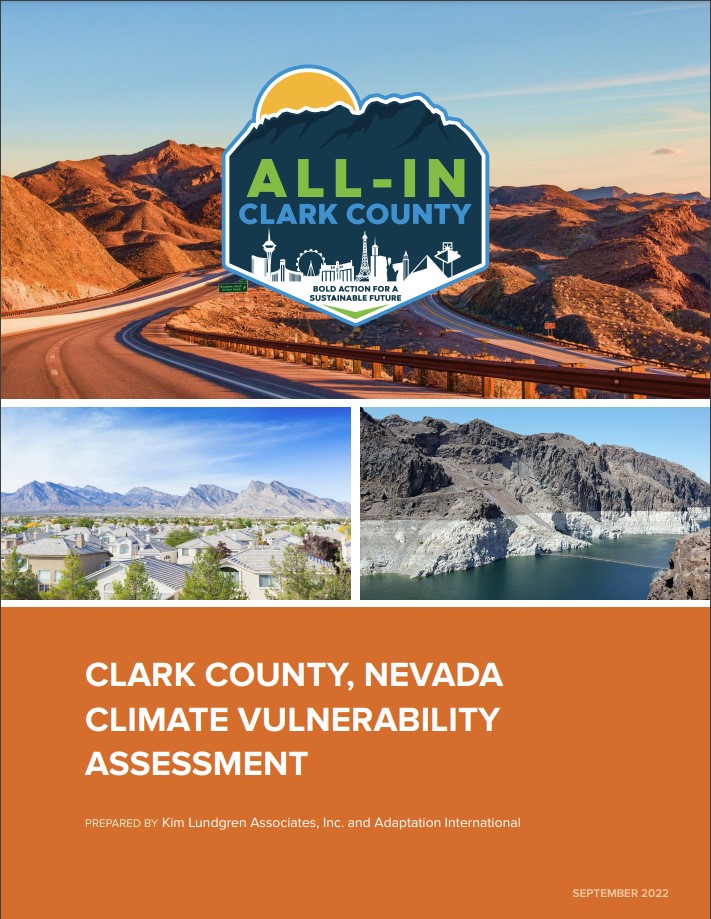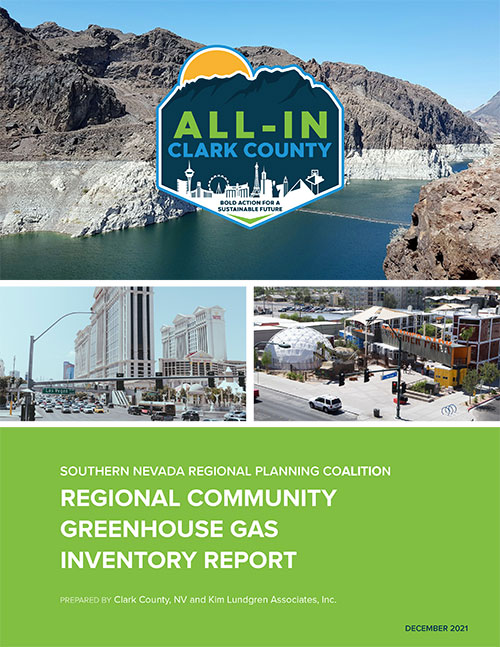About The Plans
The plans are split up into: County Operation Plan and the Community PlanAll-In Community Sustainability Action Plan
A county-wide planning effort around addressing climate change impacts in our community and developing solutions in conjunction with local business and industry, municipal governments, community organizations and concerned citizens. There are six focus areas that make up this plan, followed by an assessment and a report.
Scaling up renewable energy is Clark County’s greatest opportunity to reduce greenhouse gases (GHGs) and other air pollution. There are vast renewable energy resources available in Southern Nevada to provide clean electricity and heat. By embracing innovative and clean energy technology, Clark County can drive local workforce development and strengthen the local economy by keeping energy production in Nevada, all while preparing for the extremes of climate change.
See SectionAs Clark County’s population increases, traffic is also increasing, especially due to people driving alone. More cars on the road means more pollution, congestion, and health impacts. Promoting reliable, accessible, and emissions-free transportation options will reduce our emissions, improve air quality, and make it easier for residents and visitors to get around. Improving mobility also helps ensure access for people of all ages, abilities, and income levels to the community resources they need to thrive.
See SectionIn our current, linear economy, we use energy to take resources from the Earth, make products from them, and then they eventually become waste. Designing products to be single-use and over consuming these resources is creating a waste issue that recycling alone cannot solve. Increasing resource efficiency and promoting circular business models offer an opportunity to reverse those trends while diversifying our economy.
See Section
Climate change is already impacting Clark County through more extreme heat days, more pervasive drought, and increasingly intense storms. These climate hazards create public safety threats for residents and businesses and have significant implications for the local economy, infrastructure, human health, and well-being. A healthier, better connected, and more prepared community will be better able to adapt to changing climate conditions. Through the All-In Community Plan, Clark County has made a commitment to investing in natural resources that improve human health and reduce heat vulnerability, as well as social systems that enhance community resiliency.
See Section
Buildings contribute half of County-wide greenhouse gas (GHG) emissions. As Clark County continues to grow, where and how we develop will significantly influence the cost of infrastructure, the need for transportation, the financial burden to residents, and the resilience of neighborhoods and businesses. Together, we can guide development to prioritize safe, connected, and affordable neighborhoods and transition all our homes and businesses to be carbon neutral through efficiency and renewable energy.
See Section
Drought, evaporation, pollution, and land use choices impact the quantity and quality of our water supply from the Colorado River and Lake Mead. Current and projected drought will limit the availability of safe drinking water, threatening public health, our economy, and the many systems that depend on water to operate. To ensure a sufficient water supply for our growing region, we must invest in and maintain efficient water systems, prevent pollution, and conserve water resources.
See SectionAll-In Sustainability Action Plan for County Operations
Addresses climate change risks and contributions within Clark County's internal operations. There are five focus areas that make up this plan.

- Reduce energy consumption in County buildings and operations.
- Increase the use of clean, renewable energy to power County operations.
- Promote policies and programs that improve energy efficiency in residential and commercial buildings.
- Promote policies and programs that increase reliance on renewable energy sources for powering residential and commercial buildings.

- Ensure that County operations are resilient to the impacts of climate change.
- Design all Clark County-developed infrastructure to support community resilience to future climate conditions.
- Reduce generation of solid waste from County buildings and operations.
- Increase the diversion of County-generated solid waste.
- Support policies and programs that reduce residential and commercial waste throughout Clark County.
- Reduce emissions from vehicles in County operations.
- Support County employee commuting alternatives.
- Promote policies, programs, and infrastructure investments that prioritize multi-modal, clean, efficient transportation options throughout Clark County.
- Decrease water consumption in County operations.
- Improve area water quality by reducing impacts from County operations.
- Support policies, programs, and regional collaboration for improved water quality, water conservation, and drought management.


